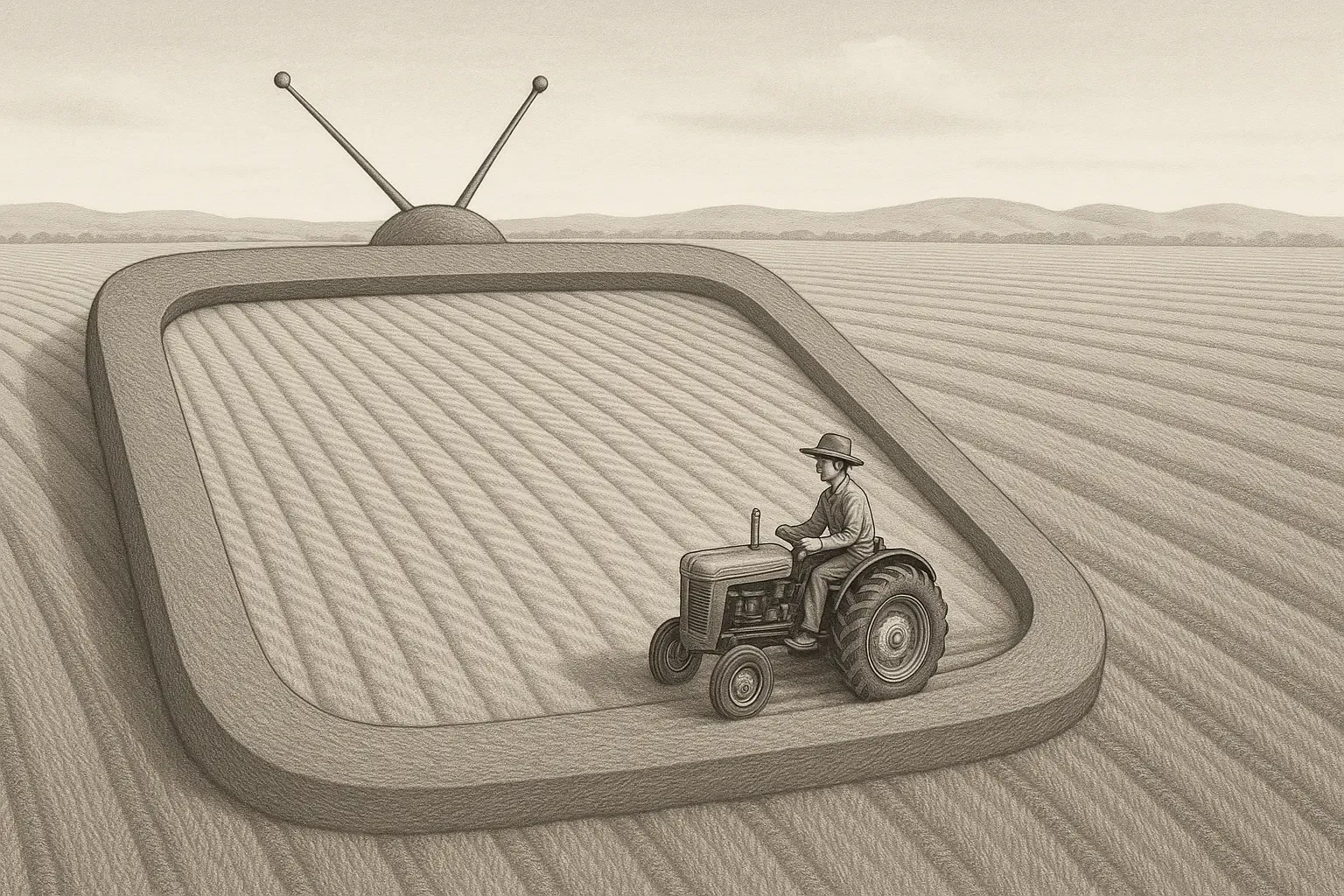The Farm Boy Who Dreamed Up Television

Rea,
It’s interesting how a single idea can stick with someone for years, guiding them through challenges. I want to tell you about a farm boy who had a clever idea when he was just 14, and how he spent the next seven years working to make it real, even when almost no one believed him.
His name was Philo Farnsworth, and in 1921, he was living on a farm in Idaho. One day, while plowing a potato field, 14-year-old Philo looked at the parallel lines the plow made in the dirt. He suddenly thought: what if an image could be broken down into lines, scanned electronically, and transmitted, just like those lines in the field?
At the time, other inventors were trying to build mechanical televisions using spinning discs, but these were clunky and produced blurry pictures. Philo imagined a completely electronic system. He drew his concept on the blackboard for his high school science teacher, who encouraged him and kept the drawing safe.
But Philo faced skepticism. Many adults thought his idea was impossible for a young farm boy with little formal training. He could have given up, dismissing it as a childhood dream. Instead, Philo held onto his vision. He studied science in his spare time, reading technical journals while working tough jobs like logging to support his family after his father passed away. For years, he filled notebooks with diagrams and calculations, always focused on his goal.
When he was 20, Philo convinced two investors in California to fund his experiments. The next few years were filled with hard work and setbacks in his small San Francisco lab. Funding was scarce, experiments failed, and doubters continued to question his abilities.
Seven years after his initial idea, at age 21, Philo achieved his breakthrough. He successfully transmitted the world’s first all-electronic image – a simple straight line – using his invention, the “Image Dissector” camera tube.
Even then, his struggles weren’t over. He spent years improving the system and fighting legal battles against the giant corporation RCA, which tried to claim his invention. Philo eventually won, using his teacher’s testimony and that original blackboard drawing from when he was 14 to prove he was the true inventor.
Philo’s story shows the power of holding onto a vision and working persistently, year after year, even when faced with doubt. That moment of inspiration in a potato field, combined with years of dedication, changed how the world communicates. Like those lines plowed in the field, Philo carved his idea into reality, one persistent step at a time.
Love, Abba
P.S. Think about an idea or project you’ve worked on for a while. What helps you keep going when it gets tough? Philo’s story shows that sticking with something you believe in can lead to good things.
